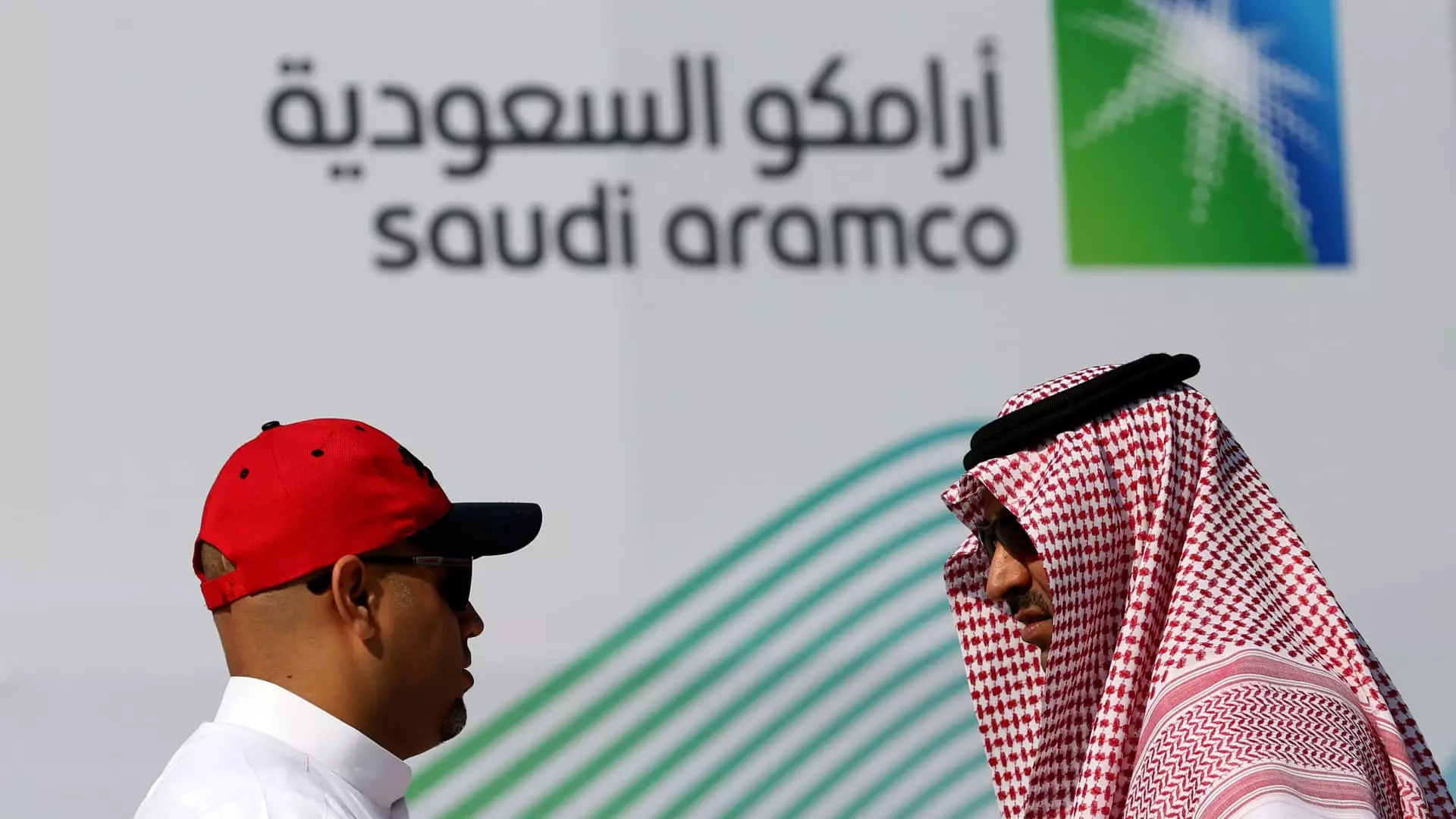In a world increasingly cautious about economic stability, the recent report from Saudi Aramco has sent shockwaves across oil markets and geopolitical landscapes. The state-owned oil giant saw its first-quarter net profit dip by 5% year-on-year, landing at a disheartening $26 billion, down from $27.3 billion the previous year. While this figure slightly exceeded analyst expectations, it is hard to celebrate a decline, especially in a sector as volatile as oil. The decline in profits isn’t merely an isolated incident; it indicates a broader malaise affecting an economy heavily reliant on oil exports.
The crux of the issue lies in lower oil prices and production. With crude oil prices continuing to languish, experts are left wondering when, if ever, a recovery might emerge. The troubling drumbeat of diminishing demand, coupled with a global trade landscape beset by challenges, paints a grim picture that extends far beyond Aramco’s balance sheets.
Dividends: A Double-Edged Sword
Dividends serve as a significant element in the financial ecosystem of publicly traded companies, particularly for those in stable sectors. While Aramco’s base dividend saw a modest rise of 4.2%, reaching $21.1 billion, the reality is far bleaker when taking into account the company’s performance-linked dividend, which saw a meteoric drop from $31 billion to a mere $21.36 billion. This drastic reduction in dividends sends a harsh message: even the once-unassailable oil behemoth cannot rely on the consistent revenue streams that have historically supported its expansive budgetary needs.
CEO Amin Nasser’s commentary post-earnings report emphasized resilience, capital discipline, and a long-term vision—all indicative of fraying nerves in an oil-reliant economy. However, such reassurances ring hollow against the backdrop of soaring budget deficits, increased national debt, and a burgeoning reliance on economic megaprojects that add more stress rather than relief.
Government Revenue and Budgetary Predicaments
In tandem with declining profits, the Saudi government’s fiscal outlook is becoming increasingly dire. The massive dividend cut translates to reduced revenue for a state already grappling with rising deficits and debt associated with its ambitious development plans. The International Monetary Fund estimates that Saudi Arabia needs oil prices above $90 per barrel to achieve budgetary balance—an unrealistic expectation in the current market climate.
As the International Monetary Fund and other financial institutions issue stark warnings about the kingdom’s financial health, government officials face a difficult task of curbing spending while maintaining public services and developmental visions. The Saudi vision is world-renowned, but visions don’t pay for infrastructure, healthcare, and education; money does.
OPEC+: The Stranglehold of Production Cuts
Adding further inconsistency to the oil landscape is OPEC+: a collective that now must closely assess its strategies to stabilize output and prices without straining relationships among its member nations. The recent decisions to ramp up production, despite a stubborn drop in oil prices, illustrate a desperate gamble to regain lost market share and stabilize their national economies.
However, economists have issued warnings that such moves could amplify existing pressures in oil markets, as the apparent aim to foster growth could literally drown them in oversupply. As global energy analysts downgrade oil price expectations, it raises a critical question about the efficacy and sustainability of production coordination among members of OPEC+.
A Glimpse into the Future: An Uncertain Path Forward
As Saudi Aramco grapples with a challenging landscape, analysts, economists, and policymakers are left on the edge of their seats. With the U.S. Energy Information Administration predicting an average Brent crude price of merely $65.85 per barrel for the year, the risks become increasingly pronounced. Goldman Sachs has warned that a continued slump might send the kingdom’s deficits rocketing into the stratosphere, shifting from $30 billion to potentially over $70 billion.
Severe cutbacks on spending and even asset sales may be necessary to navigate through these troubled waters. We must ask ourselves: Is the world prepared for a future where oil dependency is no longer tenable? Saudi Aramco’s current plight reflects not just corporate financial hardship but a troubling microcosm of systemic economic vulnerabilities—signals that cannot be ignored.
In an age characterized by fluctuating energy needs, the unsustainability of relying solely on oil is becoming increasingly apparent. Both Aramco and the Saudi government find themselves at a crossroads, with the path ahead unsure, fraught with potential crises, and yet glimmers of opportunity await for those bold enough to envision a diversified future.

